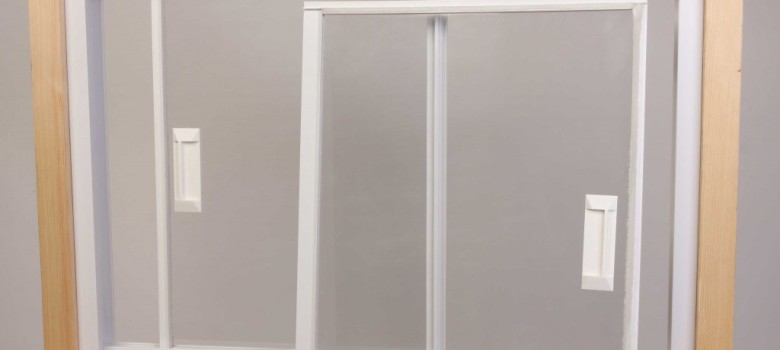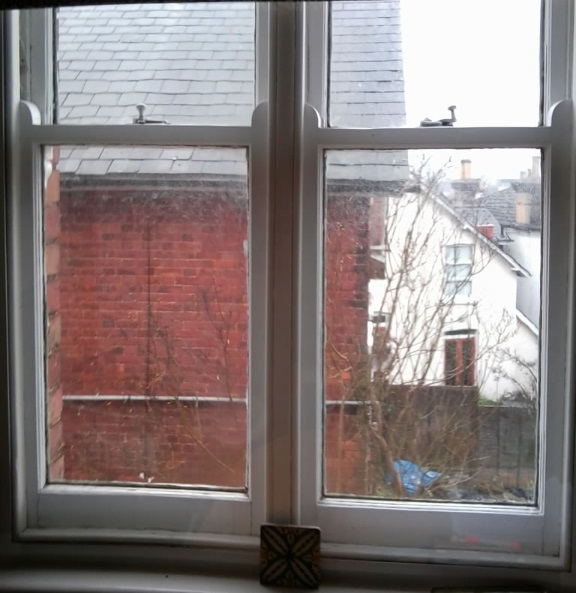
What is Double Glazing?
Double glazed windows use two sheets of glass with a gap between them that creates an insulating barrier. The gap can either be filled with a heavy inert gas such as Argon or it can be a vacuum; both of these act to slow the movement of heat from one side of the window to the other.
What is Secondary Glazing?
Secondary glazing involves installing supplementary glazing on the inside of an existing single-glazed window. It can be permanent, although often secondary glazing panels are added as a temporary measure.
Double-glazing is more expensive than secondary glazing
Double-glazing is considerably more expensive than secondary glazing, the reason being that if you decide to install double-glazing, you need entirely new units fitted – you cannot simply retrofit a second sheet of glass to single glazing.
In order for double-glazing windows to be effective thermal barriers, the gap between the panes of glass needs to be airtight and filled with an inert gas (or a vacuum). Hence for each window where you want double-glazing, a company will need to come around to your house and measure up and produce the windows specifically for you.
Secondary glazing is far cheaper – you can buy DIY kits or get installers to come and fit the supplementary glazing onto the inside of the existing window frame.
Secondary Glazing can be a DIY job; double glazing needs a professional!
As mentioned above the double-glazing units have to be made to order for your home, however once they have been built (when I had these installed it took about 6 weeks for them to be made), the installer can install about 3 windows per day. So the process is relatively quick, however this is certainly not a DIY project.
Installing secondary glazing can be done as a DIY job, however there are also companies out there that can come and install the secondary glazing for you. In comparison, since you don’t need to remove any existing window units to install secondary glazing, the process of installation is far simpler.
Which type of glazing is best to minimise heat loss?
One of the major reasons for replacing your existing windows with either double-glazing or secondary glazing is to increase the energy efficiency of your home – helping to reduce your energy bills. You will be glad to hear that both double-glazing and secondary glazing do an admirable job here. Double-glazing though is about twice as effective as secondary glazing at stopping heat escaping the home. If you swapped all your single glazed windows in an average three-bed home, you would save about £150 a year on your heating. Adding secondary glazing to the existing single glazing would save you about £75 a year. The uPVC double-glazing units should be good for 20 years or more, so payback is relatively slow, but you will get there eventually!
Secondary glazing provides a better level of acoustic insulation
Both types of windows are also great at cutting out noise pollution, however secondary glazing takes the winners medal here. Unlike the double-glazing sealed units, the two different pieces of glass in secondary glazing act as independent barriers to the transmission of noise. The greater the cavity between the two panes, the better the dampening effect – so double-glazing which has panes relatively close together is less good at cutting out noise.

Planning permission and double glazing = issues!
Planning permission is not normally required for repairing, fitting or replacing double glazed windows, except if the building is listed or in a conservation area, in which case you will run into problems, so speak to your local planning authority before installing anything.
Ecoease Secondary Glazing
About 6 months ago we also came across Ecoease – these are easily removable secondary glazing panes made from PolyEthylene Terephthalate (PET) which is a recyclable plastic. This type of secondary glazing is growing in popularity since it is easy to install, helps prevent condensation, a fraction of the price of double glazing and easily removable (so you can take it off in the summer and put in back in place in the winter).
So which is better – Secondary glazing or double glazing?
I have both types in my flat, and they both work really well – it has certainly made a difference to my heating bills since I had them all installed. My bedroom is almost entirely soundproofed from the busy road outside and the uPVC windows I had installed have really tidied up what was there previously. You may be forced into installing secondary glazing if you live in a listed property, but both types of glazing do a grand job, so I wholeheartedly recommend both of them!